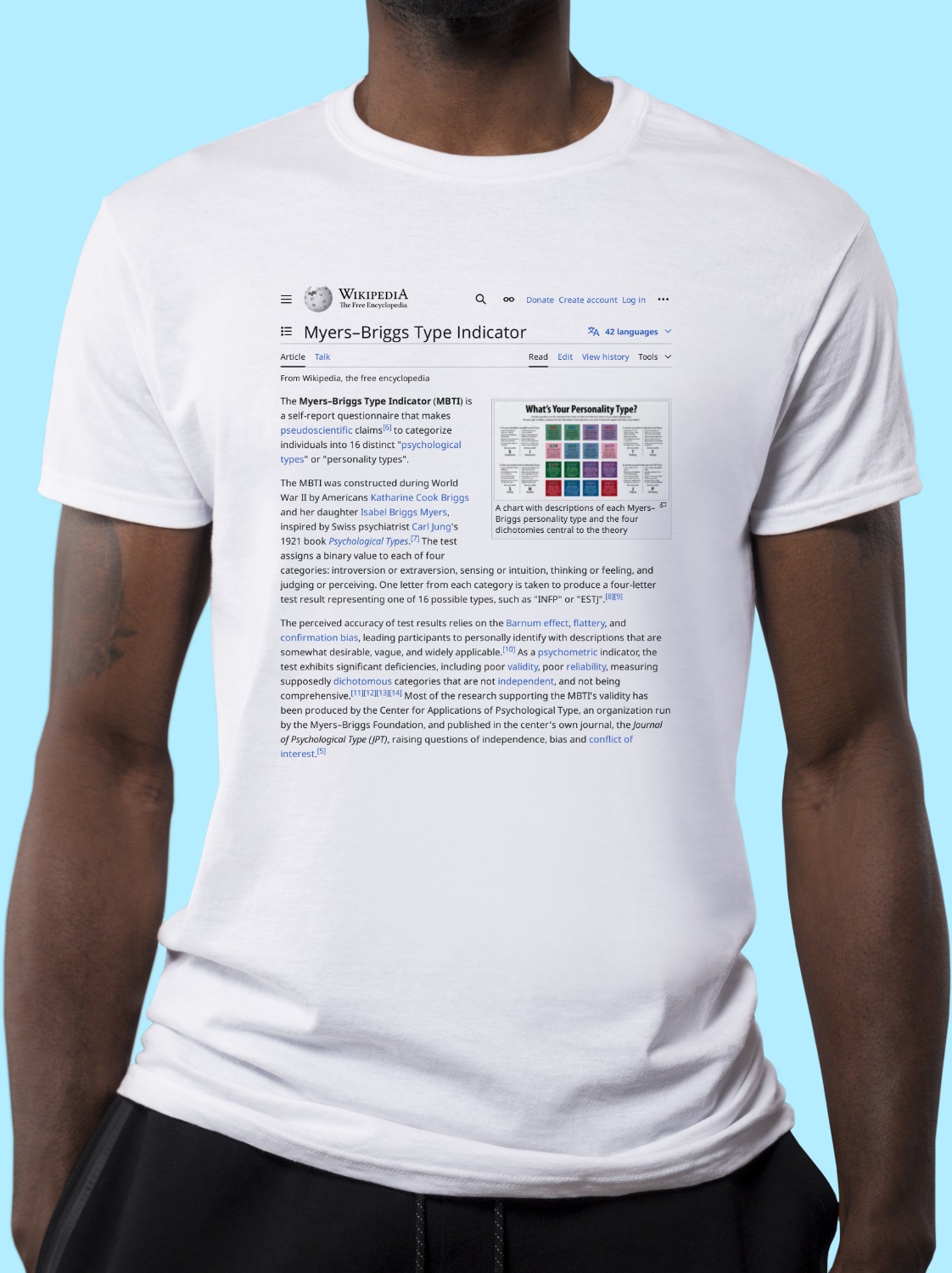
Myers–Briggs Type Indicator Shirt
A classic cotton tee emblazoned with the Wikipedia article on Myers–Briggs Type Indicator ↗.
cotton tee emblazoned with the Wikipedia article on Myers–Briggs Type Indicator ↗.- Preshrunk jersey knit
- Seamless double-needle 2.2 cm collar
- Taped neck and shoulders
- Tear away label
- Double-needle sleeve and bottom hems
- Quarter-turned to eliminate centre crease
The Myers–Briggs Type Indicator (MBTI) is a self-report questionnaire that makes pseudoscientific claims to categorize individuals into 16 distinct "psychological types" or "personality types".
The MBTI was constructed during World War II by Americans Katharine Cook Briggs and her daughter Isabel Briggs Myers, inspired by Swiss psychiatrist Carl Jung's 1921 book Psychological Types. The test assigns a binary value to each of four categories: introversion or extraversion, sensing or intuition, thinking or feeling, and judging or perceiving. One letter from each category is taken to produce a four-letter test result representing one of 16 possible types, such as "INFP" or "ESTJ".
The perceived accuracy of test results relies on the Barnum effect, flattery, and confirmation bias, leading participants to personally identify with descriptions that are somewhat desirable, vague, and widely applicable. As a psychometric indicator, the test exhibits significant deficiencies, including poor validity, poor reliability, measuring supposedly dichotomous categories that are not independent, and not being comprehensive. Most of the research supporting the MBTI's validity has been produced by the Center for Applications of Psychological Type, an organization run by the Myers–Briggs Foundation, and published in the center's own journal, the Journal of Psychological Type (JPT), raising questions of independence, bias and conflict of interest.
Despite controversies over validity, the instrument has demonstrated widespread influence since its adoption by the Educational Testing Service in 1962. It is estimated that 50 million people have taken the Myers–Briggs Type Indicator and that 10,000 businesses, 2,500 colleges and universities, and 200 government agencies in the United States use the MBTI.
About Wikishirt
Wikishirt is a retail experiment that lets you buy a shirt with any Wikipedia Article printed on it. There are over 5 million Wikipedia articles, so we have over 5 million shirts.Check out our homepage for random featured shirts and more!